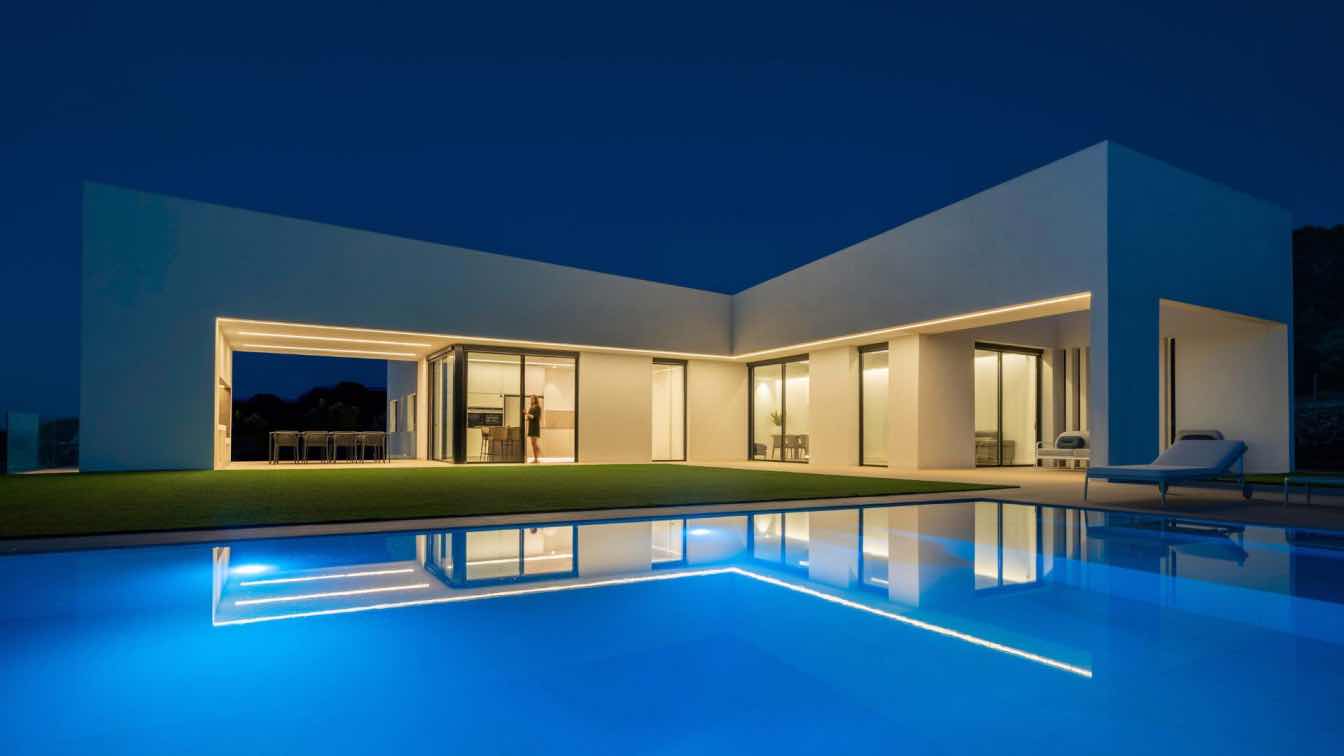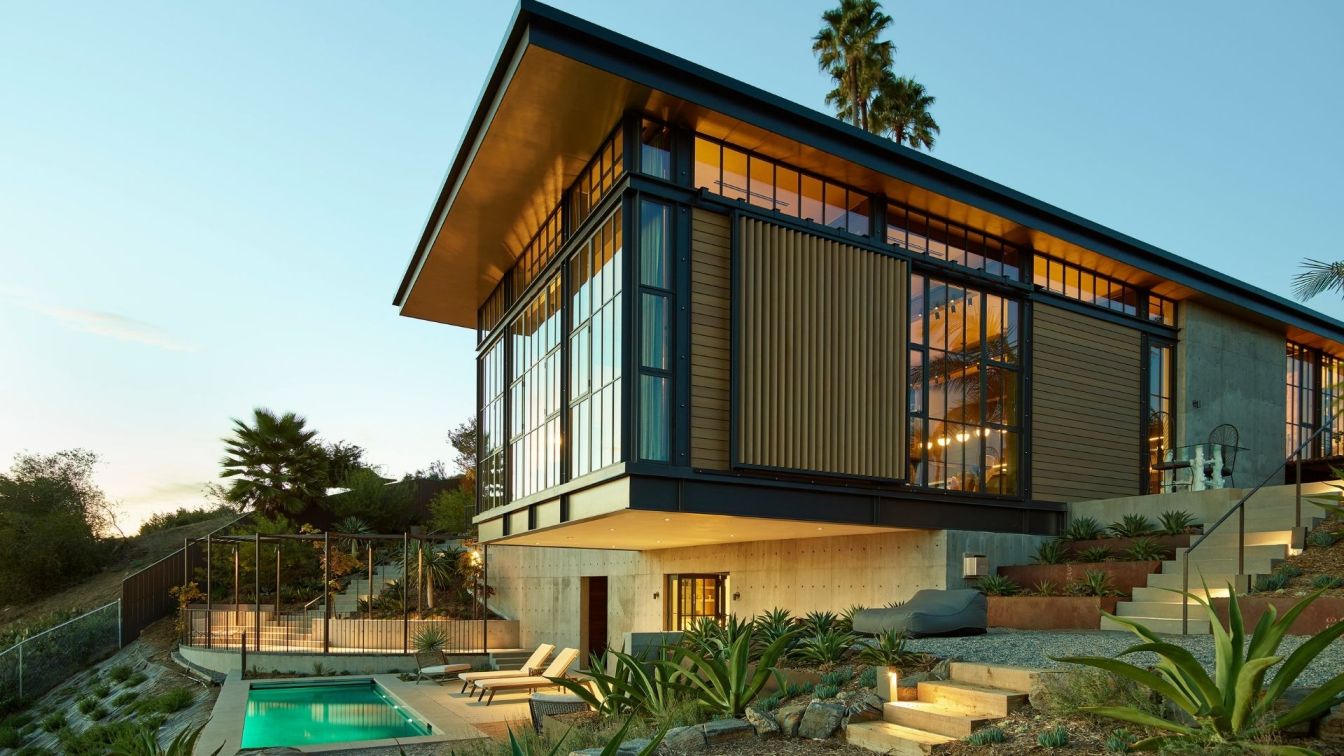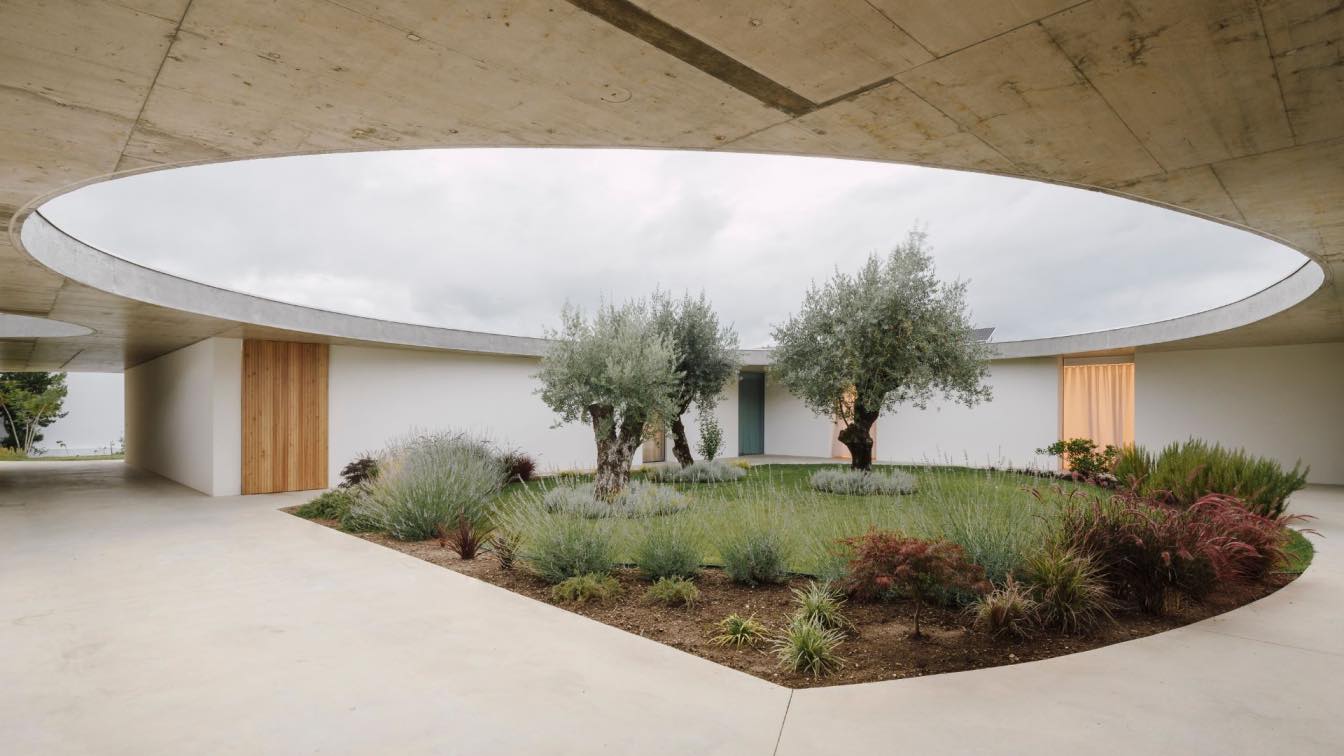Ruben Muedra Estudio De Arquitectura: On the outskirts of the urban area of Canals and surrounded by olive and citrus groves, a house is designed based on the principles of a traditional typology that respects the place where it is located. The search for landscape and environmental integration while respecting the rural environment responds to the decision to develop the program on a single floor.Starting with four prismatic volumes, we managed to fragment, organize and zone the exterior space. Likewise, each one of them will contain and will be destined to a different interior use.
The interstitial area that joins the four blocks functions as a lobby that connects each of the living spaces. Each of the blocks extends on the plot in different directions and orientations, with this gesture is obtained in the form of a cross. In this way the different exterior areas that are generated are linked to the different interior spaces in a unique and particular way.
The entire program of use is developed on the first floor, except for the night block and server spaces facing north, which takes advantage of the depression of the terrain to have two floors. Each piece that makes up the house has a height depending on its use, being the most noble spaces of the house of greater height. The roof is covered by a sloping roof of arabic tile roofing, following the rural typology of the area. The inclination of the same is done inwards, this gives each of the pieces that make up the house more depth. This operation makes that the perspective foresees to the geometry that is perceived with greater length each of the blocks.

The central core in which all the pieces converge, is materialized as a longitudinal volume, which oriented North / South opens to the outside through a large window, enjoying long views of the fields as a welcoming canvas. This vertebral axis divides the house organizing it on one side into two wings for the day area, containing the living room, dining room and kitchen. And on the other hand, this distributor gives access to other two wings that brings together the night area and server uses.
Three of the blocks have a porch at the ends, one with garage function and the other two as an exterior extension of the living room and kitchen spaces. Each of them oriented southeast, southwest and northwest respectively, giving the interior spaces great richness of use depending on the time of day. The swimming pool is conceived as another volume, dug into the ground and connected to the house by paved areas and artificial grass.
The light and white rendering typical of Mediterranean homes will be the only materials that will contrast with the red clay typical of the place. The stone pavement is continuous from inside to outside and even in the swimming pool, providing maximum continuity between the two spaces. In this way the limits are blurred, enjoying the exterior space as an extension of the interior space. The continuous white ceilings integrate air conditioning installations and indirect lighting, sound and audiovisual systems. In short, the house responds to the environment appropriating the environment and being able to adapt to it by using a minimalist architecture with Mediterranean identity.





















































